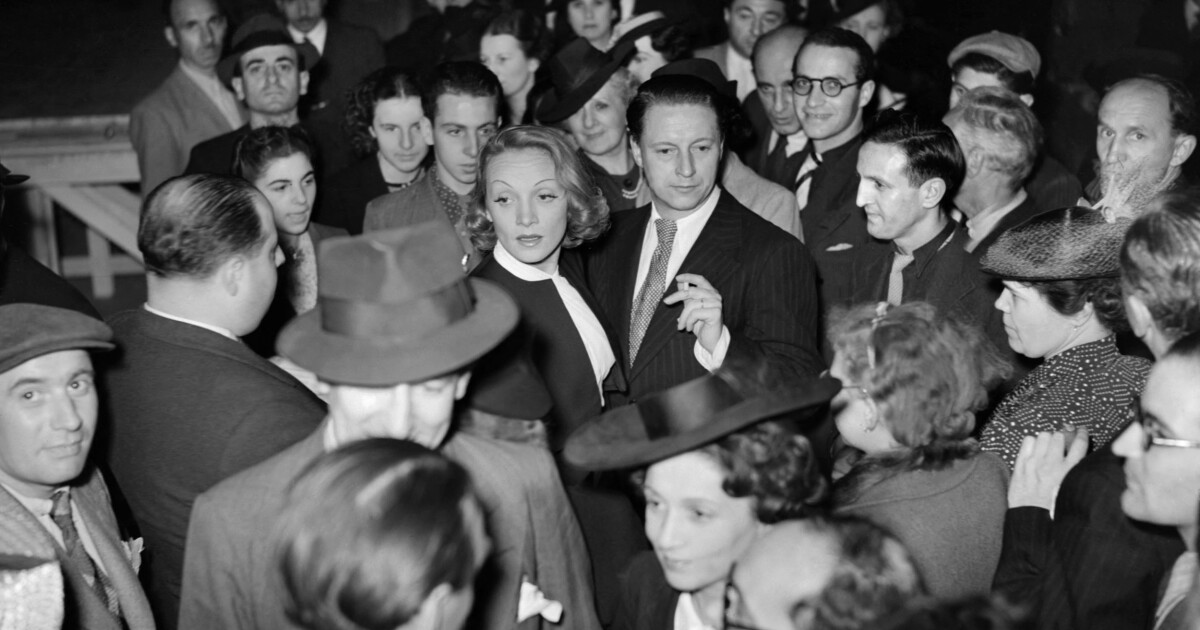- Chevron continues operations in Venezuela despite war threat NPR
- U.S. Tanker Seizure Has Paralyzed Venezuelan Oil Shipping—Except Chevron’s The Wall Street Journal
- Trump Revised Chevron’s Venezuela Deal. Maduro’s Oil Trader Profited. The New York Times
- Chevron keeps working in Venezuela amid tensions with U.S. (CVX:NYSE) Seeking Alpha
- How Chevron Secured Its Place as Venezuela’s Largest Foreign Investor The Wall Street Journal
Blog
-

Chevron continues operations in Venezuela despite war threat – NPR
-

WHO Issues Global Guidelines for Infertility Care
THE World Health Organization (WHO) has issued its latest global guidance on infertility, providing 40 recommendations and six good practice statements to improve prevention, diagnosis, and treatment of infertility. This guidance reflects…
Continue Reading
-

Ace Combat 8 Will Incorporate Dogfighting Tips From Real Jet Pilots
Next year, I’ll be sitting on my couch with a controller in hand, but on my TV, I’ll be up in the sky, chasing enemy planes through the clouds at 10,000 feet. In 2026, Bandai Namco will launch Ace Combat 8: Wings of Theve, the next game in the…
Continue Reading
-

Air Canada court battle and the sky high price of RAM: CBC’s Marketplace cheat sheet
Miss something this week? Don’t panic. CBC’s Marketplace rounds up the consumer and health news you need.
Want this in your inbox? Get the Marketplace newsletter every Friday.
Happy holidays! We’ll be back in 2026
As the holidays near, our newsletter will be taking a short hiatus — but we’ll still be on the lookout for consumer news, tips and insider info to help you save cash and stay healthy.
We’ll be back in 2026 with more of this newsletter on Jan. 9 and new episodes of Marketplace starting Jan. 16.
Air Canada wins court battle to quash $2,000 payout to passenger for delayed luggage
A dispute between Air Canada and a passenger has been sent back to the Canadian Transportation Agency, the country’s transport regulator, for a new officer to reassess the compensation claim. (Mike Hillman/CBC) Air Canada has successfully overturned a Canadian Transportation Agency (CTA) decision requiring the airline to pay a passenger $2,079 for delayed baggage.
After an 11-month court battle launched by Air Canada, Federal Court Justice Michael Manson ruled that a CTA officer’s 2024 decision was unreasonable. The matter has been sent back to the CTA, Canada’s transport regulator, for a new officer to reassess the compensation claim.
The case originates from a 2022 flight Alaa Tannous and his wife, Nancy, took from their home city of Toronto to Vancouver. Their checked baggage arrived one day after they did.
Air Canada originally offered Tannous $250 compensation. Dissatisfied with the amount, he filed a complaint with the CTA.
According to court documents, Air Canada argued the CTA’s order to award Tannous $2,079 was flawed, because the purchases he made to replace the items in his missing suitcase “were excessive, included luxury items,” and some goods were bought after the suitcase was returned.
In his decision, Manson agreed that the CTA ruling was questionable, because it included a portion of the later purchases.
“The officer’s reasons do not address nor show any common sense on why post-delivery purchases were causally linked to the delay,” he wrote.
Air Canada told CBC News in an email that it’s satisfied with the judge’s decision.
Tannous said Air Canada served him with court papers on Christmas Eve in 2024. He said he did not hire a lawyer or participate in the court case, because he felt it was a waste of money and time. He declined to comment on the outcome of the case except to point out that it’s still active.
Read more from CBC’s Sophia Harris.
Canada’s inflation rate stayed flat in November but grocery prices grew at fastest pace in nearly 2 years
WATCH | Why beef prices could continue to climb in 2026:High beef prices are expected to continue to climb in 2026. For The National, CBC’s Paula Duhatschek breaks down what’s making meat so expensive and what it will take to stabilize the Canadian market.
Canada’s annual inflation rate was unchanged in November, but grocery inflation reached its highest rate in nearly two years, Statistics Canada said on Monday.
While the overall inflation rate came in at 2.2 per cent, in November, food costs increased by 4.7 per cent compared to this time last year.
That marked the largest increase to grocery price growth since December 2023.
Fresh fruit — especially pricier berries — drove the increase, as did “other food preparations” (a category that mostly includes processed foods).
Coffee prices remain stubbornly high, having increased 27.8 per cent on a yearly basis in November. The trend has been ongoing as coffee-growing countries face adverse weather conditions and U.S. tariffs.
Meanwhile, fresh and frozen beef — up 17.7 per cent last month — continued to weigh on inflation, with prices driven up partly because cattle inventories are shrinking across North America.
Marketplace will tackle this topic in January with an investigation about how grocery stores themselves are driving the increase in the cost of food.
Read more from CBC’s Jenna Benchetrit.
AI is skyrocketing the price of RAM. Computers, phones and tablets could be next

RAM memory chips are becoming more expensive. (CBC News) From computers to cellphones and even certain features in cars, a lot of electronics rely on random-access memory, or RAM. It’s the fundamental hardware your computer processor needs to run applications, open files and let you surf the internet.
But if you’ve been in the market recently for RAM, you’ve probably noticed a major spike in prices as memory manufacturers pivot more of their production capacity away from consumer products to supplying AI companies instead, which are rapidly building data centres that need massive amounts of memory to operate.
“Prices have absolutely skyrocketed since the beginning of November,” Mark Chen, store manager at Uniway Computers, which sells custom-built PCs with RAM in Calgary, told CBC News in an email.
Back in October, Chen said he could find a 32GB DDR5 memory kit for under $130. By mid-November, the price had more than doubled to around $300.
Now, Chen says, it’s difficult to find that same memory kit for less than $400.
“Everything that uses memory, the prices are going to go up,” Willy Shih, a professor of management practice at Harvard Business School, said.
That’s essentially every electronic product from cellphones to smart fridges to modern cars.
Read more from CBC’s Rukhsar Ali.
What else is going on?
Lawyer who admitted stealing millions of dollars from homeowners is disbarred
Singa Bui forged bank statements to hide theft from auditors, tribunal hears
Via Rail CEO stepping down as Crown corporation faces increasing scrutiny
Retirement comes amid criticism of rising ticket prices and delays
Air Transat’s parent company reports $12.5M loss in latest quarter
Airline owner’s revenue increased by 1.5% compared with a year ago
National home sales fell in November with housing activity in ‘holding pattern,’ says CREA
Some sellers making price concessions to get end-of-year deals done, says economist
Thinking about going off an antidepressant? Here’s what experts want you to know about doing so safely
Many Canadians use antidepressants, but it’s not always clear when to stop
Marketplace needs your help!

Have you complained to the consumer protection office in your province or territory? If so, we want to know how it went. Email us at marketplace@cbc.ca.

Are you planning on cancelling your cell, cable or internet service? Before you do, Marketplace wants to hear from you! Email us at marketplace@cbc.ca.
Catch up on past episodes of Marketplace on CBC Gem.
Continue Reading
-

Ursid meteor shower 2025 peaks tonight: Here’s what to expect from the yuletide light show
Don’t miss the Ursid meteor shower peak tonight, heralding the last major shooting star display of 2025 as Earth plows through the debris trail shed by comet 8P/Tuttle.
The Ursid meteor shower is active during a relatively short window from Dec….
Continue Reading
-

Mystery Solved resides in restored VW bus
Mystery Solved is the work of Kariné Bulut, a Utah book influencer behind the Instagram account @Bookish801.
(Trent Nelson | The Salt Lake Tribune) Kariné Bulut and her mobile bookshop, Mystery Solved, in Holladay on Saturday, Oct. 25, 2025.
Continue Reading
-

2026 Winter in Hershey, PA
Interactive Events at Hershey Gardens
Hershey Gardens is open daily this winter except Jan. 5-9 for maintenance. Visitors can take a stroll through the 23-acre walk-through botanical display garden, featuring…
Continue Reading
-

Prince William brings his son to the same homeless shelter he first visited with Princess Diana
LONDON — LONDON (AP) — Prince William and his eldest son, Prince George, put on aprons to help make Christmas lunch at a homeless shelter, a charity that the Prince of Wales first visited as a child with his mother, the late Princess Diana.
The…
Continue Reading


